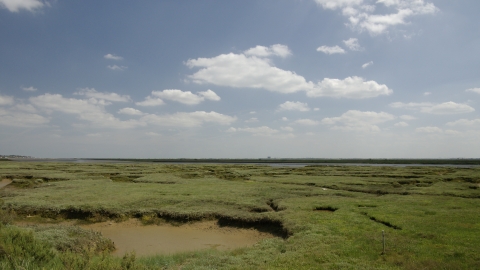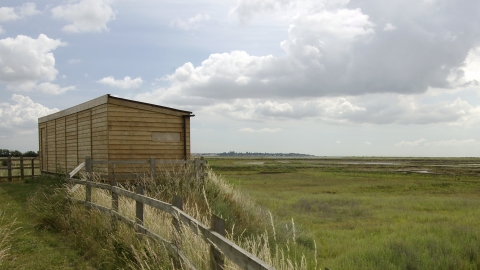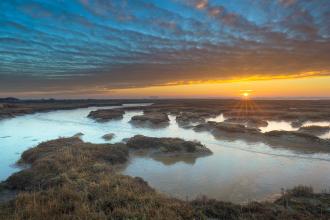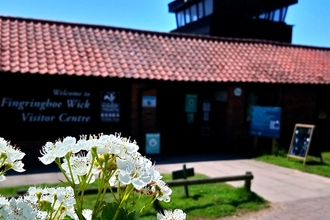Abbotts Hall, the head office of Essex Wildlife Trust is currently closed to the public while the farm buildings are redeveloped and the land is in the process of being rewilded.
While this process of redevelopment is ongoing, the cost of maintaining paths, hides, managing tree safety, and securing and decommissioning the farmyard, alongside other essential maintenance required to ready the site for wider public use, is prohibitive.
While Abbotts Hall remains closed, we highly recommend visiting our Nature Discovery Parks at nearby Abberton Reservoir and Fingringhoe Wick. We also recommend our wonderful Tollesbury Wick nature reserve on the Blackwater.
We plan to run some open days at Abbotts Hall in 2025, which will give priority access to volunteers and members, with a view to the whole site being open and fully accessible by 2026.


Saltmarsh and estuary at Abbotts Hall Farm

View from hide over estuary
Know before you go
Dogs
Dogs only allowed on designated dog walk.
When to visit
Opening times
Closed until further notice except for our regular Forest School sessions, educational activities and our on-site Nature Nursery.Best time to visit
N/AAbout the reserve
Abbotts Hall is the head office of Essex Wildlife Trust. It links together over 3,000 acres of wildlife-rich land along a 25km stretch of Essex Coast. The nature reserve is situated on the Blackwater Estuary, an internationally important area for wildlife.
The 700-acre site demonstrates how sustainable coastal defences can lead to the creation of coastal marshes that are vital for the future of both wildlife and people.
Previously a working farm, the site is now in the process of being 're-wilded' to create bountiful new habitat for a wide variety of wildlife.
Contact us
Environmental designation
Coastal Defence and Realignment
Essex Wildlife Trust purchased Abbotts Hall in 1999 and was keen to work with the Environment Agency to try and re-grow new coastal marshes on the Essex Coast.
Historical Interest
The Great Wigborough Henge is on a slightly raised area of the site and is reputed to be the location of a wooden henge or roundhouse. There are eight Red Hills on the site which indicate Iron Age/Roman salt production.


